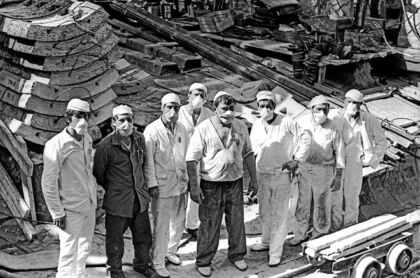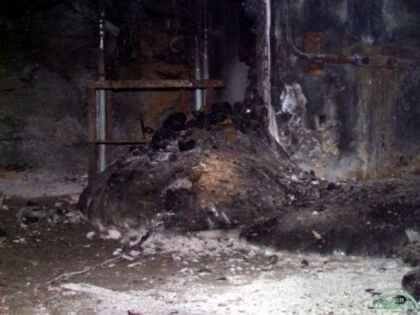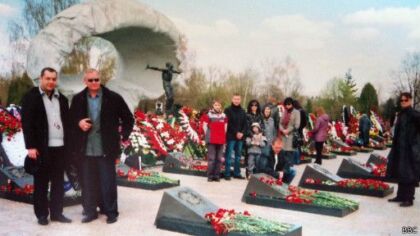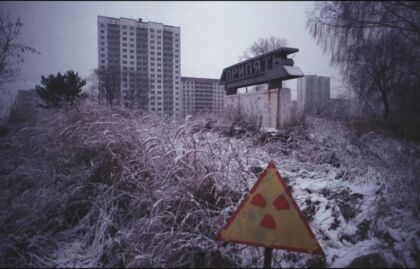Nestled in the annals of history, the Chernobyl disaster continues to evoke a sense of mystery and fascination. However, within the narrative of this tragic event, myths and misconceptions have taken root, often distorting the reality of what transpired in April 1986. In this exploration, we peel back the layers of fiction to uncover the truth about Chernobyl.
Today, join us on a journey through the realms of fact and fiction, as we dispel persistent myths that have surrounded Chernobyl for decades.
From radiation fears to heroic tales, each myth carries a story of its own, and it’s time to separate reality from the dramatizations that have shaped our perception of this historic event. Welcome to “Chernobyl Unveiled: Debunking the Myths.”
Chernobyl Myth 1 – You Will Die Of Radiation Sickness After Visiting Chernobyl
A lot of people still consider the Chernobyl Exclusion Zone as the most radioactive, “toxic” and dangerous place. On social medias we got sooo many messages/comments like “Oh no, you are in Chernobyl, you will die”, “in Chernobyl you can spend a day and start to feel radiation sickness” etc. First we thought that people were just joking, but then we realized – they really believe in it. Well, let’s dispel this myth!
An average one-day visit to Chernobyl begins and ends with a passage through an official checkpoint for dosimetry control, or radiation measurement, and there is an additional radiation checkpoint midway through the tour, according to the State Agency of Ukraine on Exclusion Zone Management.
During one day spent in the Chernobyl Exclusion Zone the body receives a dose of radiation comparable to the natural background radiation found all around us. To put this in perspective, this dose is typically 300 times less than a whole-body X-ray scan and is comparable to several hours spent on a plane, where we are more exposed to cosmic radiation coming from outer space.
In figures, you will receive 2 ️-4 μSv (microsieverts) of gamma radiation in 1 day, a dose of radiation that is absolutely not harmful.
In comparison, most of the nuclear power plants around the world have a safety limit for their employees set at 50-100 μSv per day. Probably you will get more radiation during your flight to Kyiv than from one day in Chernobyl.
Despite all of this, and the fact that the clean-up operation is still ongoing and will be for years to come, Chernobyl is generally considered safe to visit.
There are still many radioactive hotspots to avoid, especially within the tighter 10 km Exclusion Zone, but again in most places you will be exposed to less radiation than you would be on a long-haul flight. People working around Chernobyl must have their shifts rotated every one or three months, but in the months and years following the mass evacuation, several hundred people have returned to live in their villages within the wider Exclusion Zone, tolerated by the Ukrainian government.
Chernobyl Myth 2 – Rude Naked Miners.
 Chernobyl miners, summer 1986,
Chernobyl miners, summer 1986,Photo: VOSTOCK Photo
In the third episode of Chernobyl HBO series we see the scene with the miners – when the young minister arrived with armed guards to the miners and asked them for help. There are many fictions.
First, there weren’t guards with guns. Secondly, the miners would not allow themselves such a familiar attitude towards the official. The real then-minister Shchadov M.I. was about 60 years old, plus he worked in this industry, starting as an ordinary miner, for more than one decade, and he personally supervised the work of miners at the Chernobyl Nuclear Power Plant.
 Photo: UPPA/VOSTOCK PHOTO
Photo: UPPA/VOSTOCK PHOTONext scenes show us naked miners digging the tunnel. In fact, despite the terrible heat underground (temperature reached 60 degrees Celsius) and liters of sweat, NO ONE TOOK OFF THEIR CLOTHES, perhaps only respirators. They wore white clothes like the station workers. It was explained to liquidators why radiation is dangerous. However, they worked without chemical protection suits.
 The group of Chernobyl miners, 1986.
The group of Chernobyl miners, 1986.Photo: Unknown
The series does not show how their mission ended. In reality, 400 miners dug a 138-meters tunnel and a platform under the station. The construction of the tunnel and the installation of the concrete slab took just over a month. The miners worked on a rotational basis – 15 days each. Work underground was carried out around the clock, there were no breaks – only shifts changed. There were 8 shifts in total, 3 hours each.
In 2006, almost all miners who participated in the work at the Chernobyl NPP were invalids. At the moment, half are no longer alive. The fault is the invisible enemy – radiation.
Chernobyl Myth 3 – Ferris Wheel Never Has Been Used
 Family in Pripyat Amusement Park before the catastrophe, 1986.
Family in Pripyat Amusement Park before the catastrophe, 1986.Photo: Unknown
The Amusement park has become one of the icons of Pripyat as well as the Chernobyl Zone itself. This is perhaps because of the irony of its destiny. The place, which was supposed to be the center of entertainment and fun is now empty and has merged into the ubiquitous silence.
The whole Fairground was supposed to be officially opened on May 1st 1986 as a part of Labor Day celebrations, one of the most important days of the year in the Soviet era. But because of the accident at the Chernobyl Nuclear Power Plant and the following evacuation, the official opening never happened.
 Screenshot from documentary about Pripyat.
Screenshot from documentary about Pripyat.Nevertheless, several contemporary photographs taken by inhabitants of Pripyat prove that the Ferris wheel did rotate with people on it. One of the oldest photographs taken was in the winter of February 1986. Today, we know that the fairground operated in a test mode even before the accident.
“All kids in Pripyat were looking forward to the opening of the Amusement Park. Can you imagine how jealous I was when I got to know that my younger brother had a possibility to participate in test runs of the Ferris Wheel“, – remembers a former Pripyat resident.
Chernobyl Myth 4 – People on the “Bridge of Death”.
 The “Bridge of Death” in an old photo from the 80s shortly before the disaster.
The “Bridge of Death” in an old photo from the 80s shortly before the disaster.Photo: Stanislav Konstantinov
There is a road bridge to Pripyat, nowadays called the “Bridge of Death”. It is an elevated crossing above the railway that connects the premises of the Chernobyl Nuclear Power Plant with the railway station “Janov”. The bridge earned its name because of the myth that after the explosion, many curious inhabitants of Pripyat chose this bridge as their viewpoint. It’s not the truth.
 The “Bridge of Death” before the disaster.
The “Bridge of Death” before the disaster.Photo: Ihor Zholud
The truth – many citizens drove through this bridge, as usual, all day on April 26 and they could see the destroyed smoking fourth power unit (Pripyat residents were evacuated only at noon on April 27, about one and a half days after the accident). But NOBODY stood there on the night of the explosion. In fact, most of the residents slept peacefully and did not hear the explosion at the Chernobyl NPP.
 View from the bridge on Pripyat city before the Chernobyl disaster.
View from the bridge on Pripyat city before the Chernobyl disaster.Of course, the bridge itself is on an elevation, from which the Pripyat itself and the Chernobyl NPP are perfectly visible, BUT the bridge situates in at least 15 minutes walk to Pripyat entrance. So, it’s obviously that no person would like to go there at night, considering the fact that Power Plant was visible from many houses (the lowest have 5 floors, the highest – 16).
 The “Bridge of Death”, summer 2016.
The “Bridge of Death”, summer 2016.To prevent citizens from receiving a high dose of radiation, the access to the bridge was closed by police forces. There were two police patrols placed near the bridge after the evacuation. One patrolled on the side closer to the nuclear power plant, while the other was on the side closer to Pripyat.
It was also known that these police officers got a high level of contamination, but we don’t know how many of them died.
Chernobyl Myth 5 – Was the elephant foot shot with an AK-47″?

So as you can see, these things are an actually non-living monster, which can kill you within minutes if you’ll be standing next to it for a few minutes. Even in this photo, which was taken 10 years after the Chernobyl incident, the radiation would have been extremely dangerous.
Photo: Unknown
Imagine our surprise when we found out that it’s true! So, it’s the first time when we won’t debunk the myth, but we confirm its authenticity!
In the autumn of 1986, a team of scientists made one of their first and most memorable discoveries – Elephant’s Foot. Read more in our blog ELEPHANT’S FOOT IN CHERNOBYL.
What they found there was a massive globular, stalagmite-like formation of some mysterious substance. It appeared to have flowed down from somewhere above their heads before solidifying into an anthracite-black glassy mass.

Elephant Foot – an accumulation of fuel-containing masses.
Photo: Chernobyl NPP
The formation, which they named the Elephant’s Foot, stood half as tall as a man 🚷and weighed as much as 2 tonnes‼️Its surface was emitting an astonishing 8000 Roentgen per hour, or 2 Roentgen a second: 5 minutes in its presence was enough to guarantee an agonizing death. Nonetheless, orders came down from the government commission for photographs and a full analysis.
Unable to find the fuel from the reactor, the scientists had also found no sign so far of the more than 16 thousand tonnes of materials dropped into the reactor by General Antoshkin’s heroic helicopter crews and therefore hoped that the Elephant’s Foot might contain some lead intended to cool the core. But it did not readily surrender samples for testing.

Photo taken in 1990, 4 years after the incident. This slide was given to a doctor, Bill Zoller at the University of Washington Department of Chemistry.
The substance proved too hard for a drill mounted on a motorized trolley, and a soldier who volunteered to attack it with an axe left the room empty-handed — and so overexposed he had to be evacuated immediately from Chernobyl. Finally, a police marksman arrived and shot a fragment with a Kalashnikov AK-47 off the surface with a rifle!!!
Chernobyl Myth 6: Chernobyl Drivers⠀

The second episode of the HBO miniseries Chernobyl shows the scene of the “diver’s squad” – Aleksey Ananenko, Valery Bespalov and Boris Baranov, who volunteered to save Pripyat from another explosion at the NPP at the cost of their own lives. Read more in our blog “WHO SAVED EUROPE? THE THREE UNSUNG HEROES OF CHERNOBYL”.
First myth what you will find – “the divers died of radiation sickness a few weeks after their heroic deed”. In reality, NONE OF THE ENGINEERS DIED. After the accident, they continued to work on another reactor. Two of them are still alive – Ananenko and Bespalov.⠀

According to one version, Soviet newspapers wrote about the death of divers in 1986, based on rumors. Subsequently, these articles were replicated, spreading false information.⠀
Next myth was shown in the same HBO miniseries – Chernobyl divers were volunteers. In real life, the government commission formed a task and engineers Ananenko, Bespalov and Baranov, who were on shift that day, received this order. Also, in the series, the engineers were offered 400 rubles for this work, but in the reality, no one offered a reward.⠀
The third episode of the series shows the “divers” ascending to the surface after unscrewing the taps and flushing the water. They were greeted with applause and given a bottle of vodka.
Ananenko says that nothing like this actually happened:⠀
“Nobody applauded anyone. It was a regular job, who will applaud? And nobody drank vodka, I didn’t drink at all. We did not feel like heroes, we felt as usual”.⠀
Chernobyl Myth 7: Liquidators were buried in lead coffins.

Screenshot from HBO series.
At the Mitinskoe cemetery in Moscow, there are 30 graves of the first victims of the Chernobyl accident – these are the firefighters who were the first at the place of accident, and the workers of the Nuclear Power Plant. Most of them died in the clinical hospital №6 in Moscow from radiation sickness in the first months after the tragedy (May-July 1986).
By that time, the radiation from their bodies was so strong that they dried up, turning into mummies. The weight of many heroes who took the first blow did not exceed 40 kilograms.
“First, the bodies were wrapped in plastic films, then placed in wooden coffins. Wooden coffins were also wrapped in plastic films and then placed in zinc, not lead“, says Anna Korolevskaya, the deputy director of the National Chernobyl Museum.
 Screenshot from HBO series.
Screenshot from HBO series.The burial site was filled with concrete, but this was done later, about two years after the accident and not in the presence of relatives. Before this, the graves were covered with a concrete slab to reduce the high level of radioactive background at the burial site. And the heroes were not buried in one day in large numbers, as shown in the series. The funerals took place one by one, as the liquidators died.

Relatives of those killed in the Chernobyl accident at the Mitinskoye cemetery in Moscow
Photo: from the Khodymchukov family archive
“After the dissolution of the Soviet Union, the mothers and widows of the liquidators raised the question of transporting the bodies to Ukraine. But it was denied, motivated by radiation safety, ”said Korolevskaya.
Despite the fact that the HBO mini-series “Chernobyl” contains many inconsistencies with real events and fiction, we still recommend you to watch it.
Chernobyl Myth 8: Helicopter Crashed Because Of Radiation
 Photo: The helicopter crash on October 2, 1986.
Photo: The helicopter crash on October 2, 1986.While actively searching for myths about Chernobyl, we stumbled upon another myth – Helicopter Mi-8 crashed because of the intense radiation coming from destroyed reactor 4. We were surprised that such a myth exists.
You may ask – why? Because we have the original footage of that crash, filmed by the cameraman Viktor Grebenyuk, where you can clearly see that the cause of the helicopter crash was not radiation, as some people believe.
❗️Official narrative❗️: due to the absence of signal equipment on the cable of the high-altitude crane on the territory of the Chernobyl NPP, the pilots did not notice it and hooked it with propeller blades.
The helicopter crashed on October 2, 1986. The helicopter fell not into the reactor, but onto the construction site. All crew members passed away in the crash.
Chernobyl Myth 9: Mutants In The Chernobyl Exclusion Zone
Fear of radiation prompted speculation about mutants in the Exclusion Zone. If we ignore the very speculative blog posts and “eyewitness accounts” about two-headed cannibals seen in the Exclusion Zone, then mutants usually mean animals that received a dose of radiation after the nuclear power plant disaster.
The most polluted areas have absorbed radioactive metals – radioactive cesium-137 and strontium-90. They worked as a fertilizer for vegetables and fruits that grew much larger than usual. But the mutant animals, whose photos filled the Internet, weren’t ever seen live.
However, the idea that nuclear radiation causes severe mutations in animals and humans, perpetuated by the three-eyed fish in The Simpsons, has long been established, although it has a little scientific basis. It also formed the basis of the video game “S.T.A.L.K.E.R” created 20 years after the disaster.
People were so overwhelmed by the desire to create a sensation that, creating more and more new stories about mutants after Chernobyl, they did not disdain even the memory of the terrible tragedy. One of these stories was the rating of the top 10 mutants from Chernobyl.
Chernobyl Myth 10:Chernobyl Is Lifeless Wasteland
 The city of Pripyat, evacuated following the Chernobyl disaster.
The city of Pripyat, evacuated following the Chernobyl disaster. Photo: Igor Kostin/Sygma Via Getty Images
Lots of people consider the whole Chernobyl Exclusion Zone to be a dead area with silence and ghosts. Some people believe that it is a huge cemetery, that is why sometimes one can even wonder how tourist companies dare to organize trips on bones. But it’s not a cemetery, not a radioactive desert – this is the place where life is in full swing.
About 116,000 people were evacuated from the Zone at the time of the accident, but about 1,200 of them refused to stay away. They are called “self-settlers” or in Ukrainian “samosely”. The first wave of return began weeks after the evacuation and lasted about two years. In 1987-1990 self-settlers lived in Chernobyl and 17 villages.
Interesting Fact: There are no children at all. Unfortunately, the population of the Zone is decreasing.
As for example, in 1987 there were 1200 of self-settlers, today there lives only less than 100 people. Why? People die, but not because of the radiation or influence by the consequences after the accident at ChNPP. People die because of their age. The average age of the self-settlers is 75-80 years old.
But those who chanced to return to their Motherland and native houses and who are still alive to feel safe and healthy. Most villagers live self-sufficiently – they have domestic animals (pigs, cows, hens), they eat vegetables grown in their gardens and berries and mushrooms picked in the woods, and produce honey.
Nowadays, except for self-settlers, about 1-2 thousand people live and constantly work in the Chernobyl Zone.



 ChernobylX
ChernobylX
 ChernobylX
ChernobylX